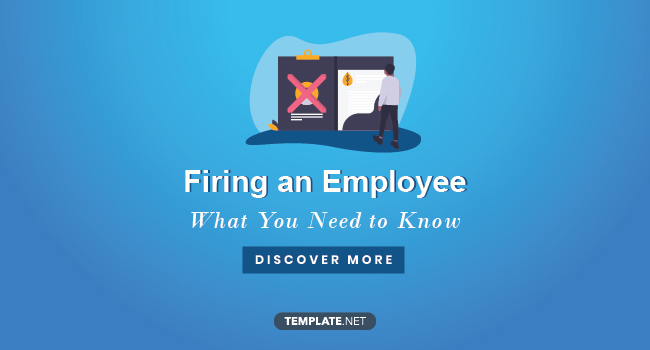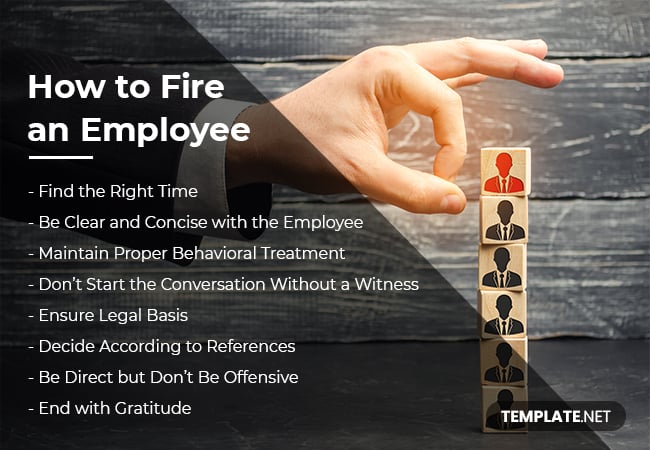Whys and Hows in Firing an Employee – A Guide
When push comes to shove, it becomes necessary to terminate or layoff employees. Such a task is far from easy and the pitfalls are numerous. What are these pitfalls, you may ask? Let’s just say that what defines ‘wrongful termination’ will vary between states. To prevent such an unfortunate scenario from taking place, it’s important to follow a termination process to a tee. Read on and you’ll learn just what it takes to rightfully fire someone–including the whys and the hows of it all.

Whys and Hows in Firing an Employee – A Guide
What to Do Before the Termination Process

Before you decide to cut the cord with a particular individual, you need to acknowledge what protects them. Labor rights exist to safeguard employees from possible employer abuse, just like how those same rights protect employers from faulty accusations. Good employee relations are needed for continued smooth operations in any company. Instead of firing someone on the spot, it should start with attempts at consistent and effective communication over what needs to be done. Below are elaborated means of what you can do before firing someone:
Communicate and Evaluate Expectations
In this case, you have to review the job description set for the employee. Through this, you will have a clear basis on whether an employee has an excellent or poor work performance within a specific interval. Also, you need to understand how the roles of each employee make sense in your business for you to determine the necessary points for improvement explicitly. To refine your employee management, you also take into account their behavior toward their responsibilities and to their colleagues. Work ethics must be part of your top priorities apart from their corporate tasks.
Concord with a Performance Improvement Plan
Employees are not robots. They sometimes have much downtime that affects their performance at work. That is why you give considerations to employees who have problems in reaching the tasks you set for them to do. With this, you will be able to tighten employee engagement and your corporate ties with them. If their evaluations present a reduced performance rate, then you now improvise a performance plan to open them chances and opportunities that may improve their entire performance. Through this, you will now be able to determine whether that person is at will for personal and professional development or not.
Release a Warning
Normally, a warning comes with progressive disciplinary actions, but its weight depends on the concern. The initial step is through verbal counseling wherein you discuss the problem and know the employee’s concerns and how to address them. Then, you both create solutions and agree with all of them. You then clarify the disciplinary actions that the involved person might encounter upon failure on his or her end. To keep discussions formal, you release a warning letter having signed with you and the employee. This is for documentary purposes. After that, you may proceed with coaching. You inform and talk through the team leader to help his/her member improve. If improvements are nowhere to be seen, you may notify the employee that he or she is subject to termination.
How to Fire an Employee

Mixtures of negative emotion surely fill the room when discussing termination. Despite the idea that there is no “right” way to go through this phase, there are still steps that can help meet your intentions halfway, along with the employee’s dignity. To keep your talk a bit not hard for the both of you, you need to be aware of the whys and hows in employee termination.
Find the Right Time
Terminating employees can cost you more than you think and in more than one way. To reduce what it can do to your company, it’s best to find the most appropriate time possible. Besides this economic concern, it’s also recommended that the discussion takes place in private. Termination will have adverse psychological effects on its subject. HR specialists need to ensure that enough chances and the best timing are given to the employee before making this final move.
Be Clear and Concise with the Employee
After calling his or her attention, you now clarify your purpose. Acknowledge his effort and then slowly open up the termination topic. You define how the decision came into action. Let the employee understand your point by being concise with your information delivery.
Maintain Proper Behavioral Treatment
Do not display possible claims of discrimination. Firing your employees does not permit you to embarrass them. They may be leaving the premises, but they have protected status as enforced by the Equal Employment Opportunity Commission. You have to respect the employee’s feelings and privacy as a person and as once part of your workforce.
Don’t Start the Conversation Without a Witness
You start delivering the decision with someone who has the authority to take part in. The company manager can be your witness upon discussing the performance evaluation report. Also, the manager can clarify further concerns from the employee. Always act under your responsibility.
Ensure Legal Basis
Any employer may terminate an employee as long as it is within legal and business grounds, not discriminatory and retaliatory. The inability of the employer to adhere to this can subject him or her to a wrongful termination lawsuit. As an HR representative, you should know the legal consideration that lies between you and your employee’s labor rights. Make sure that your decision comes from just analysis based on the signed contract, improvement plan, and the record of employee’s performance at work. Your management flows seamlessly when you have transparency in between functions.
Decide According to References
If you have regularly reviewed and evaluated your employees, the keeping of documents and references will not be your problem. Deciding to terminate someone is never a pleasant task, but if the business is at stake, you have to move and decide, but with a basis. Having these files with you can guarantee a safe place from legal issues. Validity should be your priority. In addition, these files are essential in tracking your workforce’s productivity reflecting your business’ production and progress in the industry.
Be Direct but Don’t Be Offensive
With or without warnings, you have to deliver the decision with manners. Be direct, in a way that you clarify the whys and hows of your decisions based on documents and cited actions of negligence from the signed contract. Never offend your employee of being terminated from work. Offending someone is a count for discrimination. Instead of ending this smoothly, he or she may file a legal case against you.
End with Gratitude
Lastly, thank your employee for sharing his or her expertise in the entire service with your company. You may end corporate ties technically, but your employee did not leave with no contribution at all. Always end negative talks with positive goodbyes. Firing employees can affect you both ways. As part of the company’s human resource department, you implement common grounds for you and your employees’ better performance management. You give importance to employee retention for your business’ continued possession in the industry. Also, be mindful that a sense of belonging can make a person stay.






